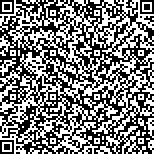| 摘要: |
| 为了解海洋微表层浮游植物群落结构的日变化特征, 于2013 年12 月3 日清晨(6:00)、正午(12:00)、傍晚(18:00)采集了大亚湾海域3 个站位微表层和次表层水样, 利用PCR-变性梯度凝胶电泳技术(PCR-DGGE)和显微镜观察对浮游植物DNA 指纹及群落结构进行了分析比较。共分析鉴定出浮游植物79 种, 微表层和次表层浮分别为61 种、68 种, 清晨、正午和傍晚观察的种类数分别为49 种、61种、51 种; 清晨、正午和傍晚的平均细胞密度分别为1.2×106、1.6×106、1.6×106个/L, 微表层和次表层平均细胞密度分别为1.72×106和1.22×106个/L。硅藻占有绝对优势, 硅藻的数量百分比均在98%以上, 主要优势硅藻为角毛藻(Chaetoceros spp.)、中肋骨条藻(Skeletonema costatum)、丹麦细柱藻(Leptocylindrus danicus)等。微表层对总浮游植物、硅藻及优势硅藻具有明显富集作用, 其中对中肋骨条藻和丹麦细柱藻的富集系数分别为4.20 和5.47, 富集率均为100%。浮游植物DNA 指纹条带也较丰富, 每个样品DNA 指纹条带数为12~28 条, 其中傍晚指纹条带最为丰富。由于优势种类对非优势种的屏蔽作用, DNA 指纹条带数低于浮游植物种类数, 但在剔除数量上小于0.5%的非优势种后, DNA 指纹条带数与浮游植物种类数相近, 说明PCR-DGGE 技术对浮游植物检测灵敏度为优势度0.5%左右。 |
| 关键词: 微表层 浮游植物群落 DNA 指纹 PCR-DGGE 大亚湾 |
| DOI:10.11759/hykx20141112004 |
| 分类号: |
| 基金项目:国家自然科学基金资助项目(41276154, 41476132) |
|
| Daily changes of the DNA fingerprints and community structure of phytoplankton in Daya Bay in winter |
|
|
| Abstract: |
| Water samples from the sea surface microlayer (SML) and subsurface water (SSW) were collected from Daya Bay, the South China Sea at early morning (6: 00), mid noon (12: 00) and late afternoon (18: 00) on December 3rd 2013. The purpose is to understand daily changes of phytoplankton community in the SML. DNA fingerprints of phytoplankton were analyzed using PCR-denaturing gradient gel electrophoresis (PCR-DGGE) technique, and phytoplankton was observed under the light microscope. A total of 79 taxa were identified during the survey in one day, including 61 species from the SML and 68 species from the SSW, and 49 species in the early morning, 61 species in the mid noon and 51 species in the late afternoon, respectively, with the average cells densities of 1.2×106 cells/L, 1.6×106 cells/L and 1.6×106 cells/L, respectively, and 1.72×106 cells/L in the SML and 1.22×106 cells/L in the SSW. The diatoms were the preponderant group, the percentage compositions of diatoms were more than 98%, and the dominant diatom species included Chaetoceros spp., Skeletonema costatum and Leptocylindrus danicus et al. Diatoms and the overall phytoplankton were enriched in the SML, particular for the dominant diatom species S. costatum and L. danicus with enrichment factors of 4.20 and 5.47 and enrichment frequency of 100%, respectively. The DNA fingerprints were rich, and ranged from 12 to 28 for each sample. The fingerprint number was the highest in the late afternoon. The fingerprint numbers were lower than the species numbers observed under the microscope as the dominant species may screen the minority group during the PCR-DGGE process. However, they showed few differences after excluding those species less than 0.5% quantitatively. The results suggested that the DNA fingerprints using the PCR-DGGE technique might represent phytoplankton community with sensitivity about 0.5%. |
| Key words: The sea surface microlayer Phytoplankton community DNA fingerprint PCR-DGGE Daya Bay |
